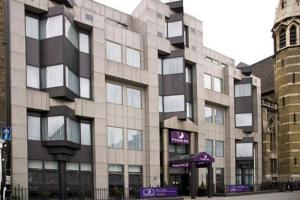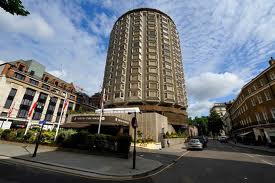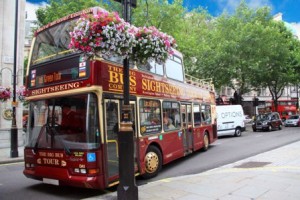
Tower of London - © Bernard Gagnon
The Tower of London is one of the most famous of the London attractions and a well known site to tourists across the world. The historic monument has a long history and has been an integral part of British Royal History for centuries. The Tower is well known as the home of the Crown Jewels and has witnessed a number of important events in British history. The Tower has long been a favourite with tourists from around the world keen to see and explore the tower, its legends and myths. The importance of the site has been demonstrated by the World Heritage Site (WHS) status the site achieved back in 1988.
Overview
The Tower of London is a historic fortress located in central London. The tower has been synonymous with the Royal Family for centuries, housing the opulent and spectacular crown jewels collection and also being the site where a number of executions have taken place through its history. The tower is among a number of World Heritage Sites in London and the WHS status granted in 1988 reflects the importance and significance the site has with regards to its history, architecture and its central role in importance events over the years.
The tower is among the most famous symbols of London and all things British, over the years it has become synonymous as a national symbol of royalty and power. Pictures of the tower are found on countless postcards and city guides, the tower is a great example of Norman military architecture. It was originally built on the Thames by William the Conqueror to help to protect London and to further strengthen his hold on power.
The Tower's long history starts in the 11th century, over the years it has used for several purposes that range from being used as a fortress, to being used as a prison, an execution site, a jewel house and a royal palace. The varied history is shown in the displays inside where visitors can see items and artefacts from each of the uses the tower has been used for. The Tower offers visitors the opportunity to see and learn more about British history for a thousand years that includes a whole host of important historical events for the UK and Europe. Visitors can see a number of events and exhibitions that are held here throughout the year, a visit here offers the opportunity for a day out for the whole family at an iconic heritage site.
Visitors can see what is regarded as the most precious national treasures, namely the Crown Jewels, containing a remarkable collection of jewels, crowns, regalia and vestments that have been worn by or used by sovereigns over the centuries. There are a number of precious jewels from all over the world on display including the famous Koh-I-Noor diamond. The site is also where three English Queens have been executed over the years, visitors can see the interactive Prisoners displays and exhibits.
Building of the Tower started back in 1078 on the orders of William the Conqueror, after Norman invasion of England in 1066. The tower, is also known as the White Tower referring to the white Caen limestone used on the central Keep. There have been a number of well known historical figures whose history is interlinked with the tower, these include Catherine Howard, Anne Boleyn, Royal Princes, Edward V and Richard Duke of York and King Henry VI, who were all executed here. Elizabeth I and Richard II were imprisoned here and Guy Fawkes interrogated.
Visitors can take part in the Yeoman Warder Tours, with the Yeoman Warders who have guarded the Tower for many centuries. The Warders will share their great stories of life at the tower including tales of imprisonment, torture and more. The tour includes a visit to the Traitors' Gate and the execution site. There are exhibitions showing Torture at the Tower, here visitors can see replicas of torture instruments used in the past and lean more about those that suffered the torture and the torturers.
How To Get There
The Tower's London location makes it assessable by public transport:
By Car:
Car drivers should be aware that finding cost effective car parking in central London can be difficult with expensive car parking charges. The car park located on Lower James Street provides car parking and is approx a 2 to 3 minute walk from the entrance of the Tower. There are a number of parking restrictions in place and visitors travelling by car need to also factor in the cost of the London Congestion Charge that the site falls under.
Alternatively car drivers can park in car parks or street bay parking further away from the area and take an Underground train, a bus or taxi in.
By Train:
The closest train stations are located at Fenchurch Street and London Bridge.
From Fenchurch Street station visitors should exit on to Mark Lane then turn left on to Byward Street and continue walking as it will lead you to Tower Hill and the Tower of London. The walk from the station is approx 7 to 12 minutes.
From London Bridge station visitors should walk across London Bridge and turn right at the end on to Lower Thames Street, continue walking and the Tower will be on your right. The walk from the station is approx 15 minutes.
By Tube (Underground):
The closest tube station is located at Tower Hill, the station is connected to both the Circle and District lines on the Underground network. There are signs visitors can follow to the Tower from outside the station, there is approx a 5 minute walk from the station to the Tower.
By Docklands Light Rail (DLR):
The closest DLR station is located at Tower Gateway Station, the station is adjacent to Tower Hill station. Visitors can follow the signs to the Tower, with a walk of approx 5 minutes.
By Bus:
There are a number of bus services that serve the area, the bus routes that service the area include: 15, 42, 78, 100 & RV1.
For visitors, the Tower is also a stop on all the major London Sightseeing Bus Tours.
By Riverboat:
The closest river access point is located at Tower Pier. There are Riverboats for Tower Pier that departs from Charing Cross, Greenwich and Westminster.
Contact Details
Address:
The Tower of London
London
England
EC3N 4AB
Telephone: 0844 482 7777 (from the within the UK)
Telephone: +44 (0)20 3166 6000 (from outside the UK)
Website: Tower of London
Facilities and Information
Opening Times:
Summer Opening Times (March to end of October:
Tuesday to Saturday: 09.00 to 17.30
Sunday & Monday: 10.00 to 17.30
Note: Last admission is at 17.00
Winter Opening Times (November to end of February)
Tuesday to Saturday: 09.00 to 16.30
Sunday & Monday: 10.00 to 16.30
Note: Last admission is at 16.00
Further Information:
Admission Fees:
Adult: £17.00 approx
Children: £9.50 approx
Concessions: £14.50 approx
Family Ticket: £47.00 approx
NOTE: The ticket prices may be available at cheaper rates when booking online, group tickets may also attract a discounted rate. See Historic Royal Palaces for the latest offers.
Map
View Larger Map
For Local Search and Directions see: Tower of London Map
Tips & Other Considerations
There may be some variations on the opening hours of attractions depending on the time of year and other factors. Visitors are advised to double check before going & avoid disappointment.
When travelling always remain alert and aware of your surroundings and environment. Follow travel safety tips and ensure your belongings in particular your wallet/purse and valuables are hidden away from public view (particularly at tourist attractions & places with crowds). If you have a bag try to use a shoulder bag with a good quality, strong strap, that is put across your shoulder not on your shoulder making it more difficult for anyone to take your bag.
If you are travelling by car to central London you are well prepared with maps and Sat Nav to aid your journey, particularly if you are not familiar with the local area and roads. Note that central London does have a number of no entry roads, bus lanes, traffic restrictions birth temporary and long term and car drivers are advised to drive with care and exercise caution. For door to door directions for car and public transport journeys, use the Journey Planning tool for further information.
If you are looking for local car parking in London, ensure you fully understand the rules, regulations & charges for car parks and street parking before you park your car. Car parking rules are rigorously enforced and any infringement of the rules can result in vehicles being fined, clamped or towed away. The rules & regulations can be complex if you are not sure it is wise not to park there.
If you are travelling by public transport, check for service updates prior to beginning your journey for any delays, disruption or cancellations to services that may impact on your journey. Ensure you have the service timetables for the trains, buses and coaches. Remember when the last services are and ensure you make it to the train/bus/coach stops well in time to avoid missing the service.
Disclaimer: The information given in on this website is given in good faith and to the best of our knowledge. If there are any discrepancies in no way do we intend to mislead. Important travel details and arrangements should be confirmed and verified with the relevant authorities.




